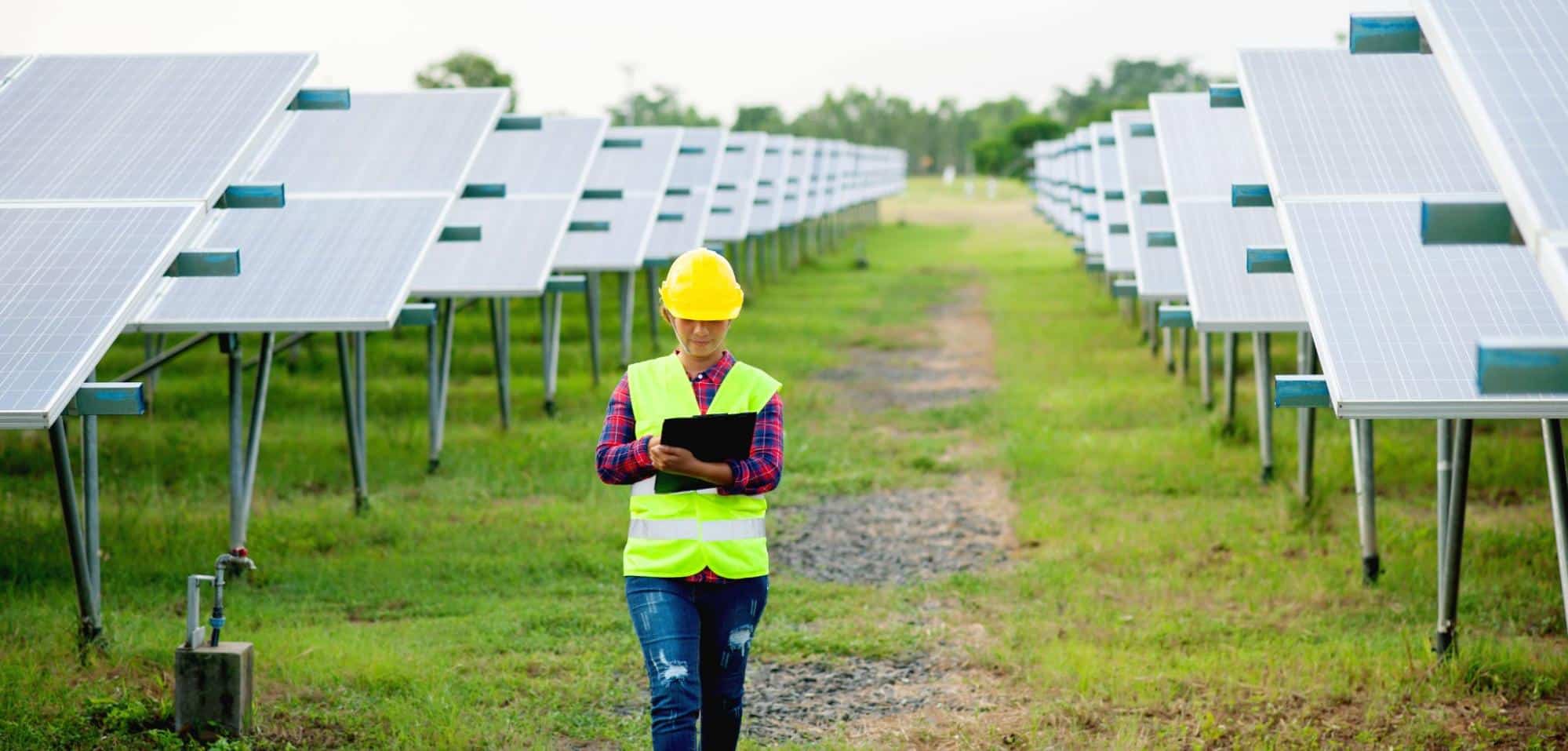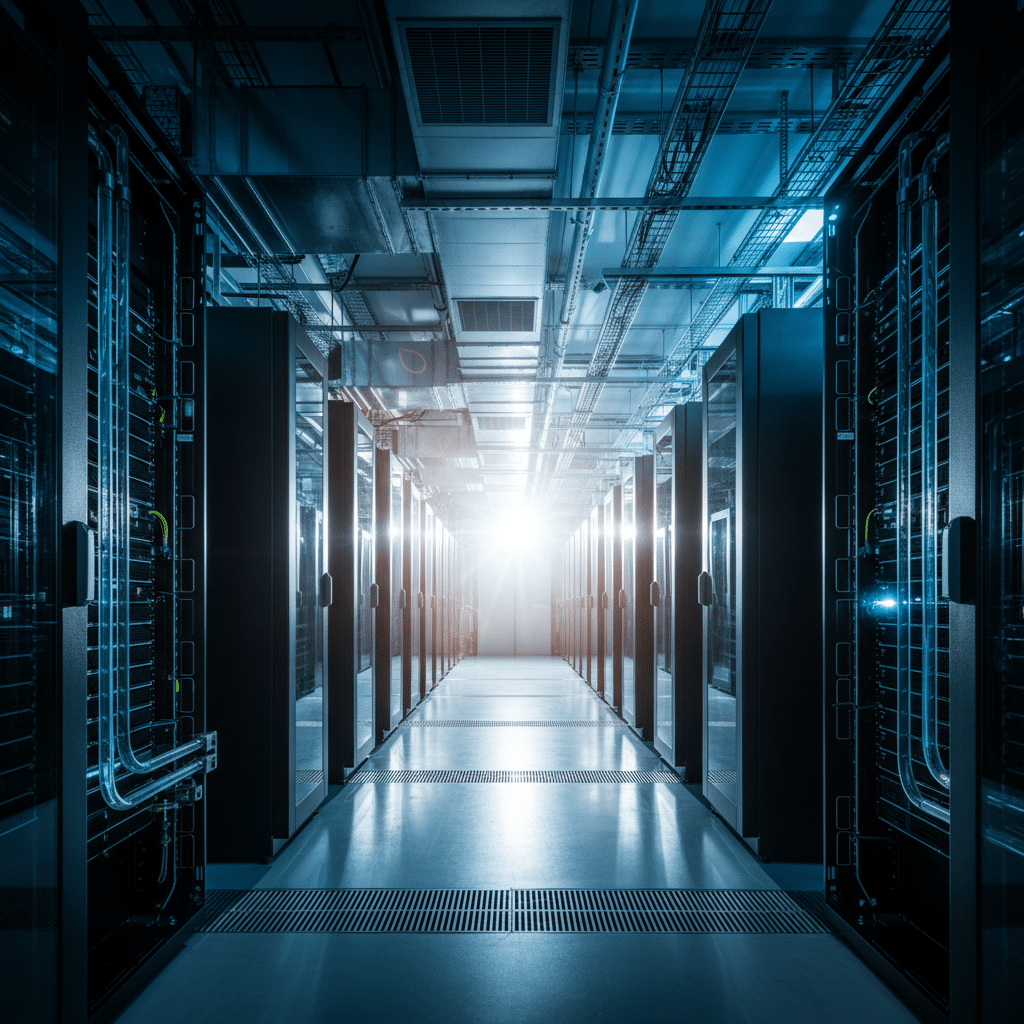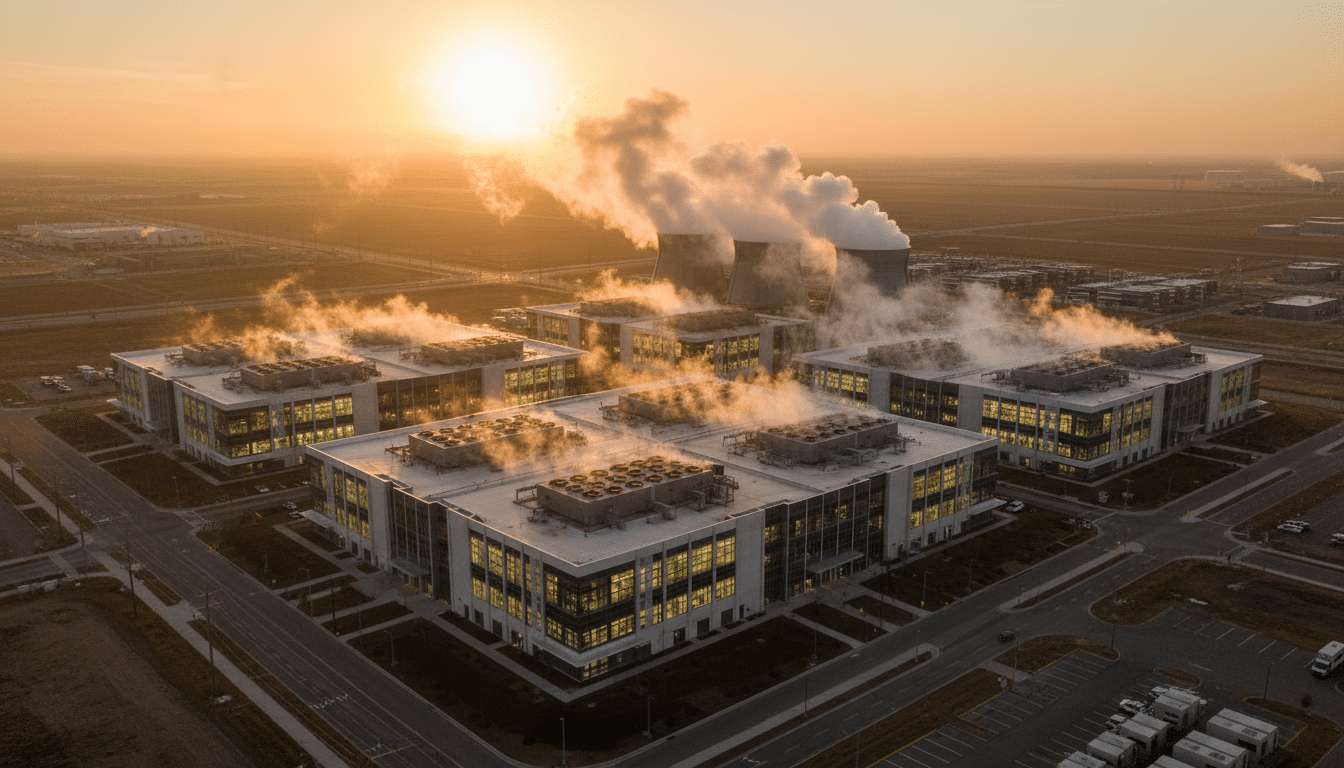Summary
Hyperscale data center energy solutions are becoming critical as AI workloads drive unprecedented power demands that could reach 12% of US electricity consumption by 2028.
- Power density increases: AI-focused facilities now require 80-150 kW per rack compared to traditional 10-15 kW configurations
- Grid infrastructure constraints: Major markets face 3-7 year delays for new power connections due to transmission limitations
- Renewable energy imperative: Leading hyperscalers have contracted over 50 GW of clean energy to meet sustainability commitments
- Emerging technologies: Nuclear partnerships, green hydrogen, and advanced geothermal solutions are gaining momentum for baseload power
Organizations planning hyperscale infrastructure must integrate renewable energy strategies from day one to avoid costly delays and meet escalating sustainability requirements.
The artificial intelligence revolution has fundamentally transformed how we think about data center infrastructure. As hyperscale data center energy solutions become increasingly complex, organizations face an unprecedented challenge: how to power massive AI workloads while meeting ambitious sustainability goals in an energy-constrained world.
Recent analysis from the 2024 US Data Center Energy Usage Report by Lawrence Berkeley National Laboratory shows that data centers consumed 4.4% of total US electricity in 2023, but projections indicate this could surge to 12% by 2028 as AI adoption accelerates. This explosive growth is creating new demands for hyperscale sustainability solutions that can deliver both performance and environmental responsibility.
The stakes couldn’t be higher. Companies that fail to secure adequate, sustainable power for their AI infrastructure risk falling behind in the race for artificial intelligence dominance, while those that master hyperscale data center energy solutions will gain significant competitive advantages.
What Makes Hyperscale Energy Challenges So Complex?
Understanding the magnitude of hyperscale energy demands requires examining both the technical specifications driving power consumption and the infrastructure constraints limiting expansion. The convergence of AI workloads with traditional data center operations has created an entirely new category of energy challenges that existing power systems were never designed to handle.
What Makes Hyperscale Power Requirements Different?
Traditional enterprise data centers typically operate with power densities of 10-15 kilowatts per rack. In contrast, modern hyperscale infrastructure supporting AI workloads can demand significantly higher power densities, with next-generation configurations pushing toward 200+ kW per rack according to McKinsey research. This represents a fundamental shift in how we design and operate data center infrastructure.
According to McKinsey analysis, the United States alone is expected to grow from 25 GW of data center demand in 2024 to more than 80 GW by 2030. This growth trajectory is creating acute pressure on power grids that were never designed to handle such concentrated, continuous loads.
The power consumption profile of AI workloads differs dramatically from traditional computing. Model training operations can run continuously for weeks or months, requiring sustained high-power delivery without interruption. GPU clusters must synchronize across thousands of processors, making any power fluctuation potentially catastrophic for expensive training runs.
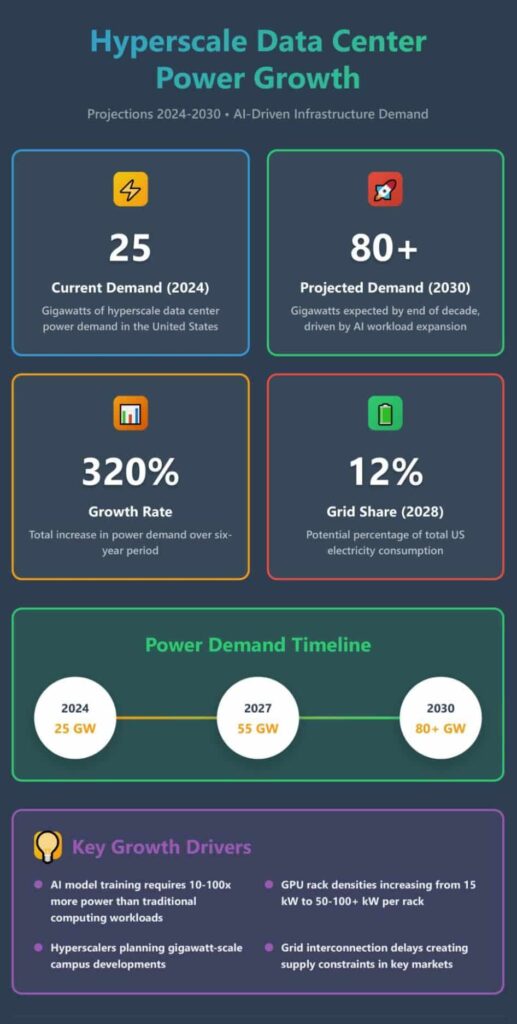
Grid Infrastructure Constraints Create Bottlenecks
Power availability has emerged as the primary constraint for hyperscale expansion. In high-demand markets like Northern Virginia, which hosts over 70% of global internet traffic, wait times for new power connections can exceed five years. The region’s data center capacity already surpasses most individual countries except China, yet demand continues to accelerate.
Similar constraints exist across other major data center markets. Dallas, Phoenix, and Columbus are all experiencing unprecedented demand that’s pushing local utilities to their limits. Supply chain disruptions for critical infrastructure components like transformers and switchgear are creating additional delays, with lead times extending 12-18 months beyond historical norms.
These bottlenecks are forcing a fundamental rethinking of hyperscale data center energy solutions. Traditional approaches that rely solely on grid connectivity are no longer viable for organizations with aggressive AI deployment timelines.
How Are Hyperscale Operators Meeting Sustainability Goals?
The environmental impact of hyperscale operations extends far beyond simple energy consumption metrics. Organizations must navigate complex carbon accounting, regulatory requirements, and stakeholder expectations while scaling infrastructure to meet unprecedented computational demands.
The Carbon Intensity Challenge
Data centers currently emit approximately 105 million metric tons of carbon annually, representing about 2% of total US emissions. This figure has increased by 300% since 2018, directly correlating with the expansion of hyperscale facilities. The Environmental and Energy Study Institute reports that data centers have an average carbon intensity of 548 grams of CO2 equivalent per kilowatt-hour, approximately 50% higher than the national average.
This elevated carbon intensity stems largely from location decisions that prioritize cost and connectivity over clean energy access. Many hyperscale facilities are located in regions where fossil fuel power plants provide the majority of grid electricity. Research from the Environmental and Energy Study Institute goes on to state that from September 2023 to August 2024, 56% of data center electricity came from fossil fuel sources, while renewable energy provided only 22%.
Corporate Sustainability Commitments Drive Change
Leading hyperscale operators have made ambitious sustainability commitments that are reshaping energy procurement strategies. Microsoft aims to be carbon negative, water positive, and zero waste by 2030. Google has committed to operating on 24/7 carbon-free energy by 2030. Amazon plans to achieve net-zero carbon emissions by 2040.
These commitments are translating into massive renewable energy investments. According to Data Center Dynamics, hyperscale operators contracted 50 GW of clean energy by the end of Q3 2024 alone. This represents generation capacity equivalent to Sweden’s entire power system.
The scale of these commitments is driving innovation in hyperscale sustainability approaches. Companies are moving beyond simple renewable energy credits toward direct ownership and co-location of clean generation resources.
What Are the Most Innovative Energy Solutions for Hyperscale Data Centers?
The most successful hyperscale operators are implementing comprehensive energy strategies that combine multiple approaches to achieve both performance and sustainability objectives. These solutions require coordinated planning across site selection, power procurement, and infrastructure design.
Strategic Geographic Distribution for Clean Energy Access
Smart site selection has become critical for accessing abundant renewable resources. Texas has emerged as a leading destination for hyperscale development due to its extensive wind and solar capacity, business-friendly regulatory environment, and available land for large-scale development.
Meta recently signed an agreement to purchase 260 MW of solar power from the Sypert Branch project in Texas to support its hyperscale operations. CPS Energy in San Antonio anticipates a tenfold increase in data center power demand, projecting needs to exceed 3,300 MW by 2033. These proactive infrastructure investments demonstrate how regional energy strategies can support hyperscale growth while advancing renewable energy adoption.
Geographic distribution strategies also enhance grid stability and resilience. By spreading computing workloads across multiple regions with diverse energy resources, hyperscale operators can optimize both cost and sustainability while reducing concentration risk in any single market.
On-Site and Near-Site Renewable Integration
Co-located renewable generation is becoming increasingly attractive for hyperscale sustainability initiatives. Installing solar arrays and battery storage systems directly at data center sites reduces transmission losses, enhances energy security, and provides backup power capabilities that reduce reliance on diesel generators.
Advanced energy storage systems are enabling more sophisticated renewable integration strategies. Large-scale battery installations can store excess solar generation for use during peak demand periods and provide rapid response capabilities for maintaining power quality during grid disturbances.
Some developers are creating purpose-built renewable energy campuses specifically designed to support hyperscale operations. These integrated facilities combine solar and wind generation with battery storage and advanced grid management systems to provide dedicated clean power that can operate independently when needed.
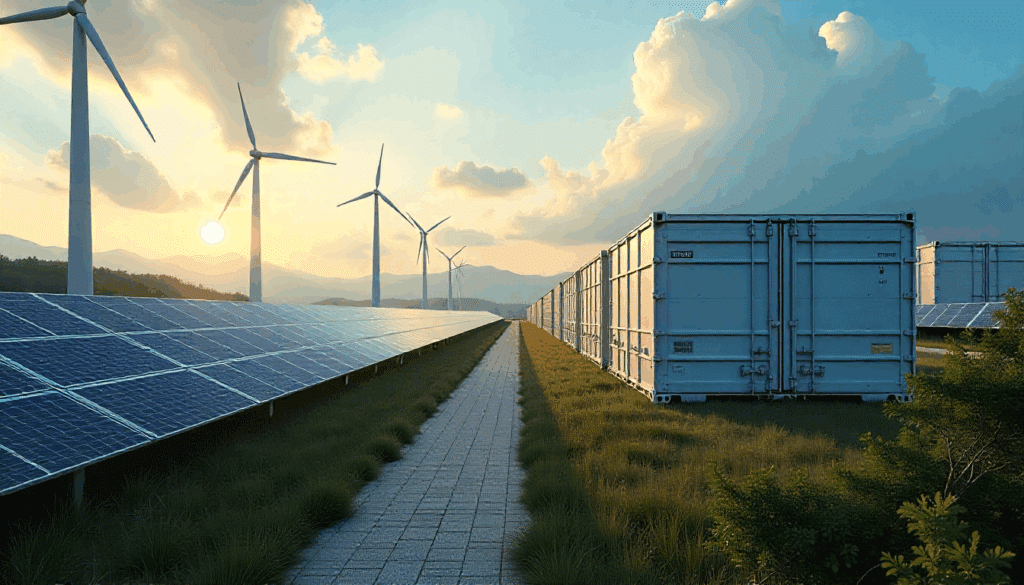
Next-Generation Cooling Technologies Reduce Energy Intensity
Cooling typically represents 38-40% of total data center energy consumption, making thermal management a critical component of hyperscale data center energy solutions. Traditional air cooling systems cannot efficiently handle the heat densities generated by modern AI workloads, driving adoption of advanced liquid cooling technologies.
Direct-to-chip liquid cooling systems can reduce cooling energy requirements by up to 40% compared to traditional air cooling while supporting much higher rack densities. According to Deloitte research, liquid cooling technologies can reduce power usage by as much as 90% compared to air-based cooling methods while supporting dense power racks of 50-100 kW or more.
These cooling innovations are enabling more efficient hyperscale infrastructure that can deliver higher computational density while consuming less total energy per unit of computing capacity.
5 Essential Hyperscale Data Center Energy Solutions for 2025
As organizations accelerate AI deployment and hyperscale infrastructure expansion, five key approaches have emerged as critical for achieving both operational success and sustainability goals. These solutions represent proven strategies that can be implemented at scale while adapting to evolving technology requirements.
- Integrated Renewable Energy Campuses
Purpose-built facilities that combine hyperscale data centers with co-located solar, wind, and battery storage systems. These campuses can operate independently from the grid when needed while providing dedicated clean power that meets sustainability commitments.
- Advanced Energy Storage and Grid Management
Sophisticated battery systems paired with intelligent control software that can store renewable energy, provide backup power, and deliver grid balancing services that support renewable integration at regional scale.
- Multi-Source Power Procurement Strategies
Diversified energy portfolios that combine direct renewable PPAs, nuclear partnerships, and emerging technologies like green hydrogen to ensure reliable baseload power availability regardless of weather conditions.
- Modular and Scalable Infrastructure Design
Flexible facility designs that can rapidly deploy additional computing and power capacity as demand grows, enabling organizations to scale AI capabilities without lengthy construction timelines.
- Strategic Site Selection and Land Development
Comprehensive evaluation of locations based on renewable energy potential, transmission access, regulatory environment, and long-term expansion capabilities rather than just proximity to existing markets.
How Are Alternative Energy Technologies Transforming Hyperscale Operations?
Beyond traditional renewable sources like solar and wind, hyperscale operators are exploring emerging technologies that can provide reliable baseload power while meeting stringent sustainability requirements. These alternative approaches are becoming increasingly important as power demands outpace conventional clean energy availability.
Nuclear Power Partnerships Gain Momentum
Nuclear energy is experiencing renewed interest as a carbon-free baseload power source for hyperscale operations. According to Data Center Dynamics, Amazon Web Services acquired a 960 MW nuclear-powered data center campus in Pennsylvania, while Microsoft and Google have signed long-term agreements with nuclear operators for dedicated power supplies.
Small modular reactor (SMR) technology is particularly promising for hyperscale applications. These smaller, more flexible nuclear systems can be deployed closer to data center sites and scaled incrementally as demand grows. However, regulatory approval and construction timelines mean SMR-powered facilities are unlikely to be operational until the 2030s.
Green Hydrogen and Advanced Geothermal Solutions
Green hydrogen production using renewable electricity is gaining attention as a storage and backup power solution for hyperscale facilities. Hydrogen fuel cells can provide zero-emission power generation during periods when renewable sources are unavailable, supporting 24/7 clean energy operations.
Enhanced geothermal systems that tap deep underground heat sources are being developed specifically for data center applications. These systems can provide consistent baseload power with minimal environmental impact and are particularly valuable in regions with limited solar and wind resources.

Overcoming Implementation Challenges
Successfully deploying hyperscale data center energy solutions requires navigating complex technical, financial, and regulatory obstacles. Understanding these challenges and developing mitigation strategies is essential for organizations planning large-scale AI infrastructure investments.
Power Grid Interconnection and Permitting
Connecting hyperscale facilities to power grids involves complex technical and regulatory processes that can take years to complete. Successful projects require early engagement with utility providers, comprehensive environmental assessments, and careful coordination with regional transmission operators.
Advanced developers are streamlining these processes by working with utilities to pre-identify and prepare sites with existing grid capacity. This proactive approach to implementing hyperscale data center energy solutions can reduce interconnection timelines from 5-7 years to 18-24 months in some cases.
Financial and Risk Management Considerations
Hyperscale infrastructure development requires substantial capital investments with long payback periods. Power purchase agreements and renewable energy investments involve complex financial structures that must account for technology evolution, regulatory changes, and market volatility.
Risk management strategies include diversified energy portfolios, flexible contract terms that allow for technology upgrades, and comprehensive insurance coverage for both construction and operational phases.
Technology Integration and Operational Complexity
Managing integrated renewable energy systems requires sophisticated control software and specialized operational expertise. Successful hyperscale sustainability initiatives combine multiple technologies that must work seamlessly together to deliver reliable power while optimizing efficiency and cost.
Organizations are increasingly partnering with specialized energy campus developers who can provide turnkey hyperscale data center energy solutions that integrate all necessary technologies under comprehensive service agreements.
What Does the Future Hold for Gigawatt-Scale Data Center Campuses?
The next evolution of hyperscale infrastructure will require unprecedented coordination between energy generation, transmission infrastructure, and computing facilities. These developments will reshape both the technology and energy sectors while establishing new models for sustainable digital infrastructure.
The Next Generation of Hyperscale Development
Industry leaders are already planning gigawatt-scale data center campuses that will represent the next evolution of hyperscale infrastructure. According to Data Center Frontier, these massive facilities will concentrate enough computing power to support entire artificial intelligence ecosystems while incorporating renewable energy generation at utility scale.
Gigawatt campuses offer several advantages for hyperscale sustainability initiatives. They enable economies of scale for renewable energy development, justify investment in advanced technologies like small modular reactors, and provide sufficient load to support dedicated transmission infrastructure.
Policy and Regulatory Evolution
Government policies are evolving to support hyperscale sustainability goals while ensuring grid stability and energy security. Tax incentives for renewable energy and data center development are being restructured to encourage clean energy integration and grid-beneficial technologies.
Regional planning initiatives are beginning to coordinate hyperscale development with renewable energy deployment and transmission infrastructure expansion. These comprehensive approaches can accelerate deployment timelines while maximizing benefits for local communities and power systems.
Frequently Asked Questions
How much power do hyperscale data centers typically require? According to McKinsey research, rack power densities are rapidly increasing, going upward of 50-100 kilowatts per rack for modern AI workloads, compared to traditional data centers that typically operate at 10-15 kW per rack. Large hyperscale facilities can have total power demands of hundreds of megawatts.
What percentage of hyperscale data center energy comes from renewable sources? According to the Environmental and Energy Study Institute, from September 2023 to August 2024, approximately 22% of data center energy came from renewable sources, while 56% still came from fossil fuel power plants and 21% from nuclear energy. Leading hyperscale operators are working to increase renewable percentages through direct PPAs and on-site generation.
How long does it take to develop hyperscale infrastructure with renewable energy? Development timelines vary significantly by location and complexity. According to McKinsey analysis, data center builds can reach 18-24 months, while renewable energy projects typically stretch 3-5 years, and transmission development can take 7-10 years. In constrained markets like Northern Virginia, lead times for new power connections can exceed three years.
What are the main challenges in implementing hyperscale sustainability solutions? Primary challenges include grid interconnection delays, limited transmission capacity in key markets, supply chain constraints for critical equipment, and complex permitting processes. According to McKinsey research, lead times for electrical equipment can exceed two years, while power unavailability in most markets is driven by transmission grid limitations rather than generation capacity.
Building Tomorrow’s Sustainable Hyperscale Infrastructure
The convergence of artificial intelligence and sustainability requirements is creating unprecedented opportunities for innovation in hyperscale data center energy solutions. Organizations that develop comprehensive energy strategies incorporating renewable generation, advanced storage, and efficient infrastructure design will gain significant competitive advantages in deploying and scaling AI capabilities.
Success requires more than simply purchasing renewable energy credits or installing solar panels. The most effective hyperscale data center energy solutions require deep expertise in both renewable energy development and data center infrastructure to integrate site selection, power procurement, infrastructure design, and operational management into comprehensive energy campuses designed for long-term scalability and environmental responsibility.
As the demand for AI-powered services continues accelerating, the companies that master sustainable hyperscale data center energy solutions will shape the future of digital technology while demonstrating that environmental responsibility and technological innovation can advance together.For organizations ready to develop next-generation hyperscale infrastructure that combines massive computing power with sustainable energy solutions, Hanwha Data Centers provides specialized expertise in comprehensive energy campus development, renewable integration, and scalable power infrastructure designed to meet the most demanding AI workloads while achieving ambitious sustainability goals.

